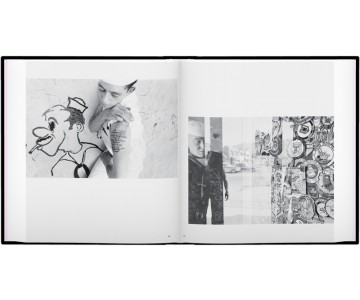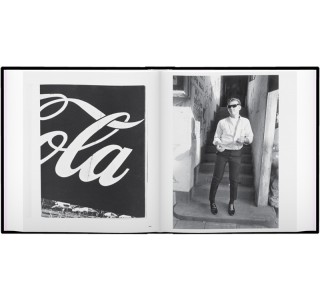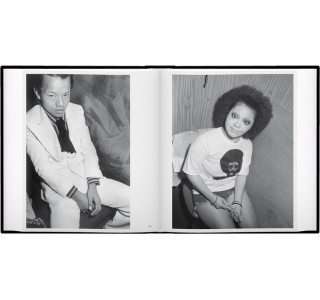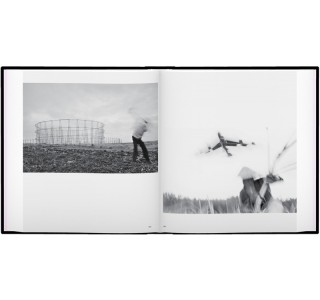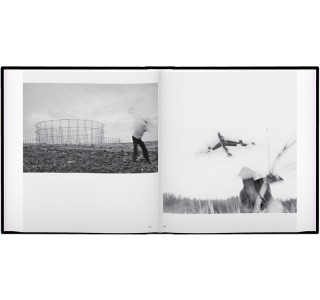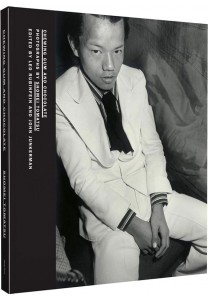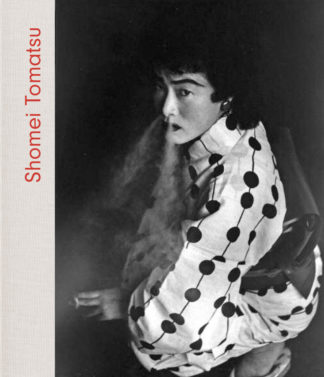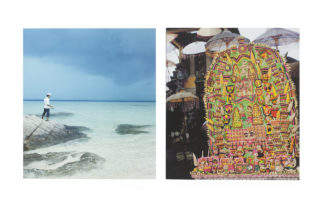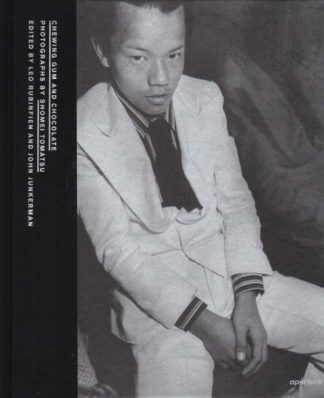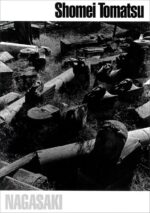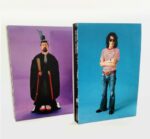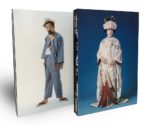Version en allemand. Version en anglais ICI.
Shomei Tomatsu, l’un des plus grands photographes japonais du Xxe siècle, a réalisé l’un des portraits marquants du Japon d’après-guerre. En commençant par sa méditation sur la dévastation causée par les bombes atomiques dans 11:02 Nagasaki, Tomatsu a continué à se concentrer sur les tensions entre la culture traditionnelle japonaise et l’occidentalisation croissante de la nation dans son livre séminal Nihon. À partir de la fin des années 1950, Tomatsu s’engage à photographier le plus grand nombre possible de bases militaires américaines au Japon. Les photographies de Tomatsu ont porté sur l’impact sismique de la victoire américaine et de l’occupation : des soldats américains en uniforme se promènent dans des quartiers de lumière rouge avec des Japonaises ; des enfants étrangers jouent dans des paysages délabrés, chez les forces américaines ; et la manifestation qui s’est formée en réponse à la présence militaire américaine. À l’origine, il a nommé cette série Occupation, mais plus tard il l’a rebaptisée Chewing Gum and Chocolate pour refléter les documents remis aux enfants japonais par les soldats — sucré et addictif, mais qui, au bout du compte, n’ont pas de valeur nutritive. Et bien que beaucoup de ses images les plus emblématiques sont de cette série, cette œuvre n’a jamais été rassemblée dans un seul volume. Leo Rubinfien contribue un essai qui engage avec l’ambivalence de Tomatsu vers l’occupation américaine et l’identité nationale changeante du Japon. Également inclus dans ce volume des écrits jamais traduits auparavant par Tomatsu des années 1960 et 1970, fournissant un contexte à la fois pour les intentions originales de l’artiste et la pensée sociopolitique de l’époque. Shomei Tomatsu (né à Nagoya, Japon, 1930; mort à Naha, Japon, 2012) a joué un rôle central dans Vivo, une agence de photographie autogérée, et a fondé la maison d’édition Shaken et le journal trimestriel Ken. Il a participé à la première exposition de photographie japonaise en 1974 au Musée d’art moderne de New York, et, en 2011, le Nagoya City Art Museum a présenté Tomatsu Shomei : Photographies, un aperçu complet de son travail. Il a reçu de nombreux prix, dont le Grand Prix d’art japonais de 1999. Leo Rubinfien (rédacteur et essayiste) est photographe, écrivain et conservateur.
Shomei Tomatsu, one of Japan’s foremost twentieth-century photographers, created one of the defining portraits of postwar Japan. Beginning with his meditation on the devastation caused by the atomic bombs in 11:02 Nagasaki, Tomatsu continued to focus on the tensions between traditional Japanese culture and the growing westernization of the nation in his seminal book Nihon. Beginning in the late 1950s, Tomatsu committed to photographing as many of the American military bases in Japan as possible. Tomatsu’s photographs focused on the seismic impact of the American victory and occupation: uniformed American soldiers carousing in red-light districts with Japanese women; foreign children at play in seedy landscapes, home to American forces; and the emerging protest formed in response to the ongoing American military presence. He originally named this series Occupation, but later retitled it Chewing Gum and Chocolate to reflect the handouts given to Japanese kids by the soldiers—sugary and addictive, but ultimately lacking in nutritional value. And although many of his most iconic images are from this series, this work has never before been gathered together in a single volume. Leo Rubinfien contributes an essay that engages with Tomatsu’s ambivalence toward the American occupation and the shifting national identity of Japan. Also included in this volumeare never-before-translated writings by Tomatsu from the 1960s and ’70s, providing context for both the artist’s original intentions and the sociopolitical thinking of the time. Shomei Tomatsu (born in Nagoya, Japan, 1930; died in Naha, Japan, 2012) played a central role in Vivo, a self-managed photography agency, and founded the publishing house Shaken and the quarterly journal Ken. He participated in the groundbreaking New Japanese Photography exhibition in 1974 at the Museum of Modern Art, New York, and, in 2011, the Nagoya City Art Museum featured Tomatsu Shomei: Photographs, a comprehensive survey of his work. He was the recipient of numerous awards, including the 1999 Japan Art Grand Prix. Leo Rubinfien (editor and essay) is a photographer, writer, and curator.


